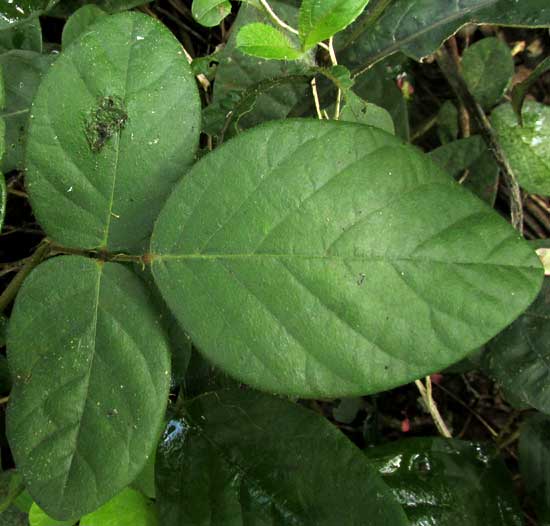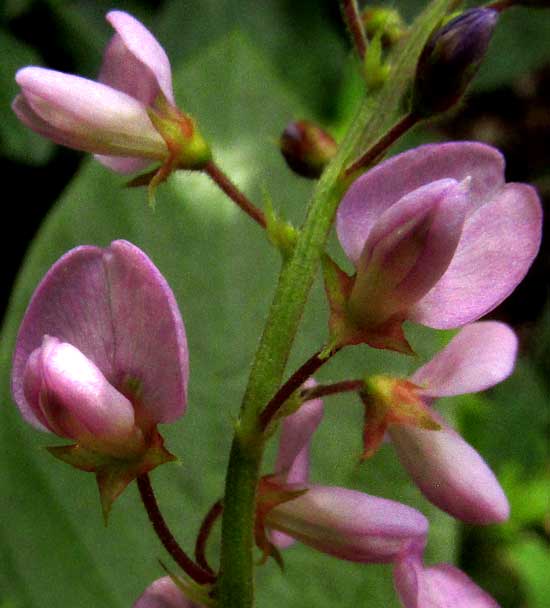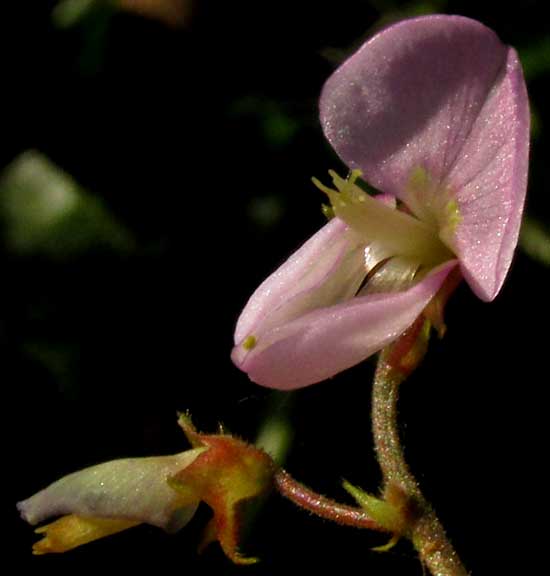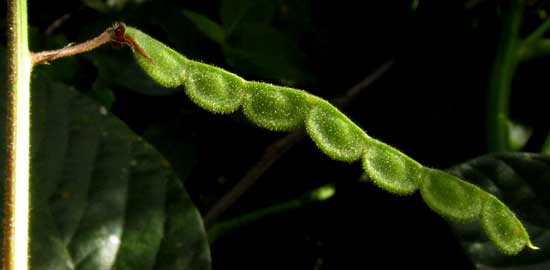Excerpts from Jim Conrad's
Naturalist Newsletter
from the January 14, 2018 Newsletter issued from Rancho Regenesis in the woods ±4kms west of Ek Balam Ruins; elevation ~40m (~130 ft), N20.876°, W88.170°; north-central Yucatán, MÉXICO
TICK TREFOIL
At the garden's weedy edge a relatively dainty looking little member of the Bean Family turned up with trifoliate leaves (leaves with three leaflets) and pale rose colored flowers structured more or less like blossoms of common garden beans, as shown below:

The leaflets were broad and soft-textured, with very short stems, or petiolules, as shown below:

The flowers were small but pretty, of the classic "papilionaceous" design, meaning that each corolla consisted of an expanded top petal -- the standard, or banner -- two side petals known as wings, and two lower petals fused together along their common margins into a scoop-shaped structure known as the keel. The flowers are shown below:
 A flower with its wings and keel bent down to reveal the stamens' filaments fused into a tube around the ovary and style is shown below:
A flower with its wings and keel bent down to reveal the stamens' filaments fused into a tube around the ovary and style is shown below:

The Bean Family is enormous, but when after a few days the plant's flowers dropped their corollas and fruits appeared, I knew we had a member of the genus Desmodium, species of which are known as tick trefoils. Below, you can see the distinctive, loment-type fruit :

A close-up of a loment joint is shown below:

Notice that the joint's hairs tend to hook at their ends. When the loment is mature, its segments easily break from one another. If a hairy animal brushes the plant, the hooked hairs latch onto the fur and the joint with its seed inside is disseminated to a new location.
Our little tick trefoil is DESMODIUM AFFINE, which has no commonly used English name, and occurs from Mexico south through Central America to Argentina in South America. Despite its extensive distribution, there's not much information on it. It's not a very aggressive weed, or a big or colorful one, and it isn't known to contain interesting chemical compounds. It's just one of those little plants that turn up from time to time surprising you with its charm if you only take the time to pay attention to it.